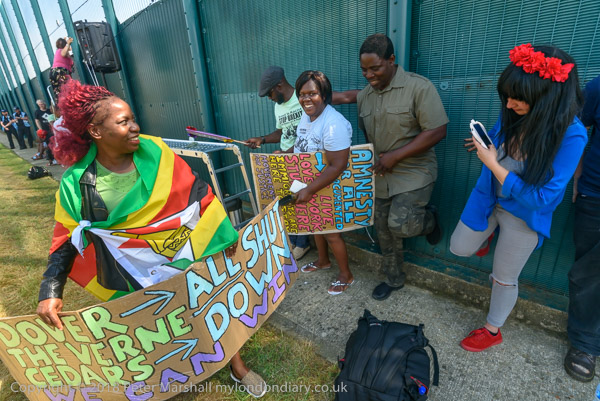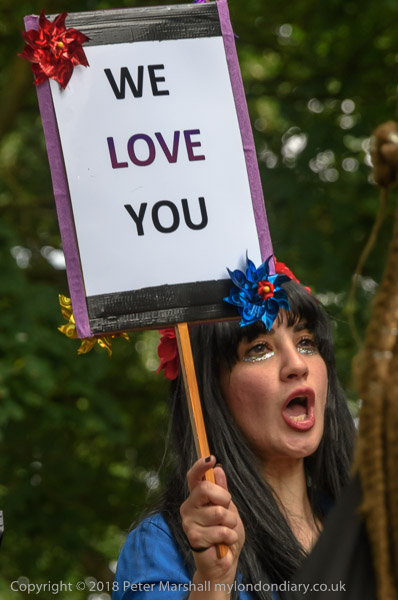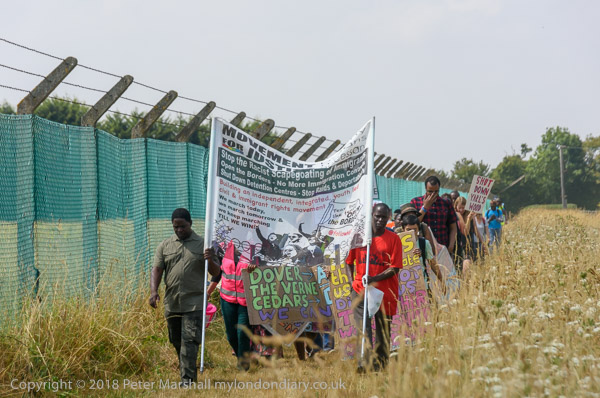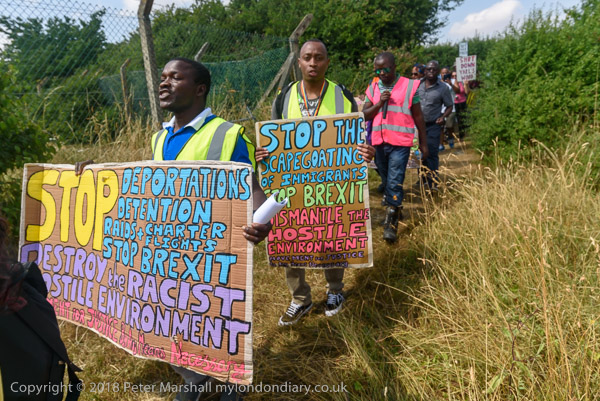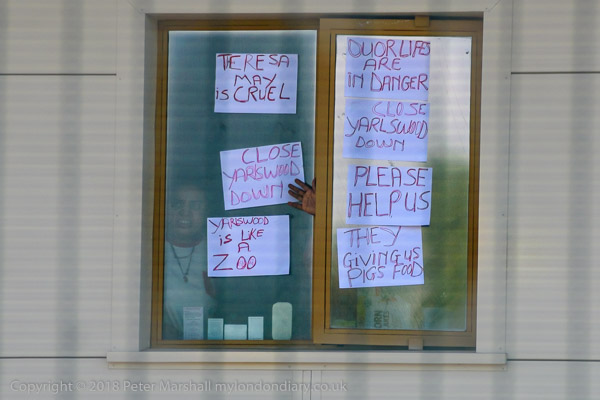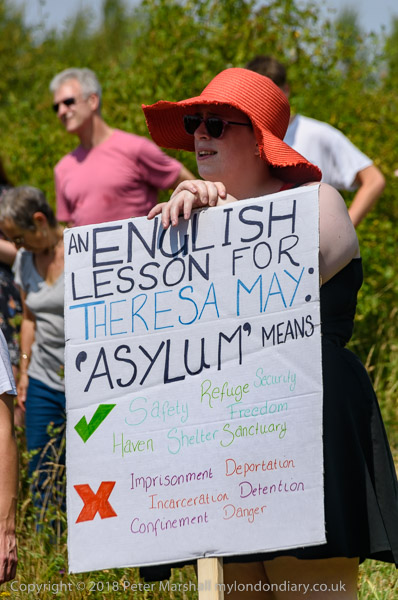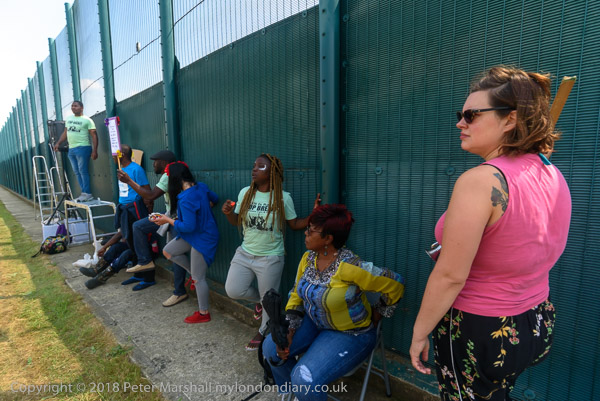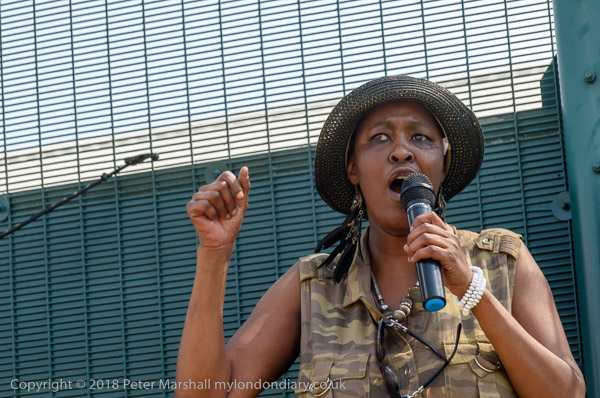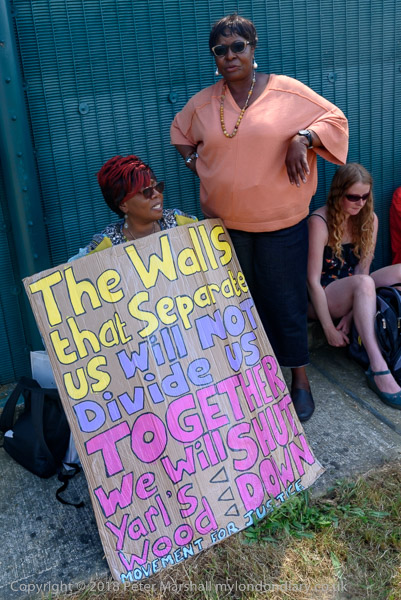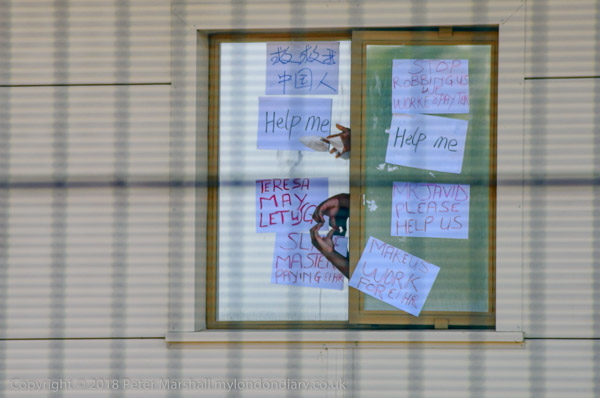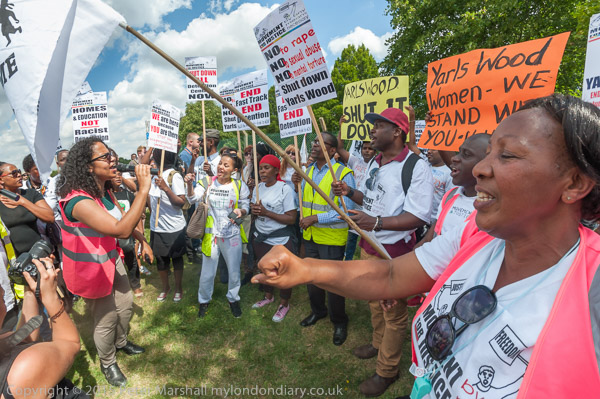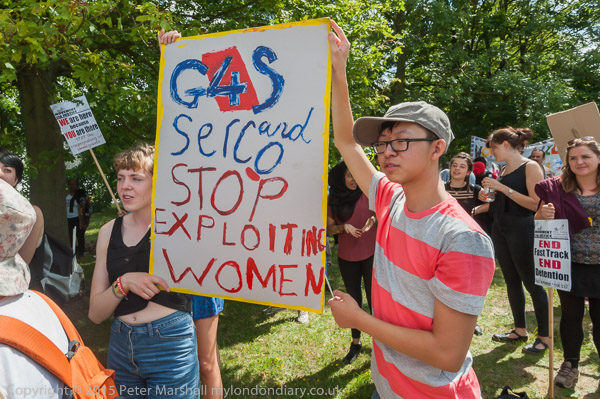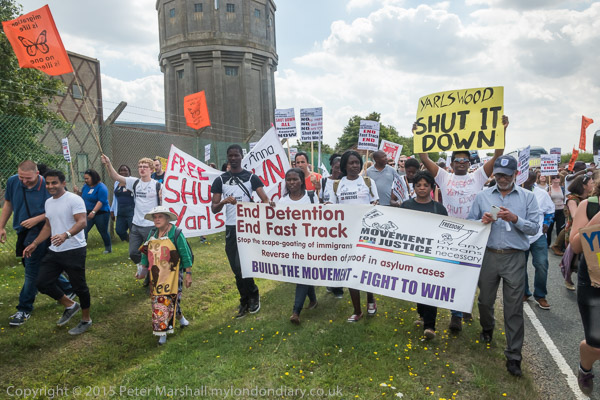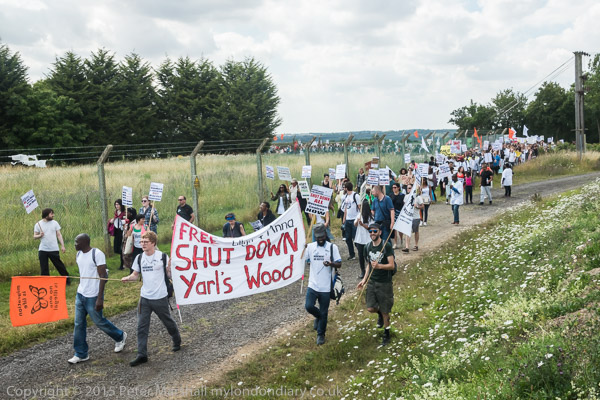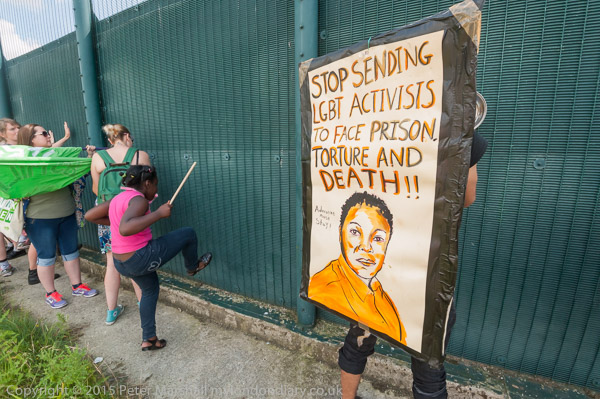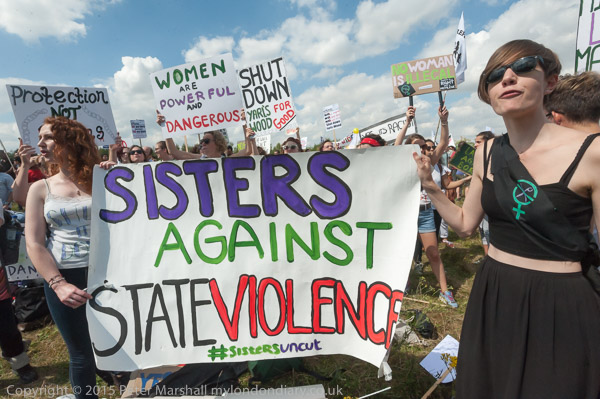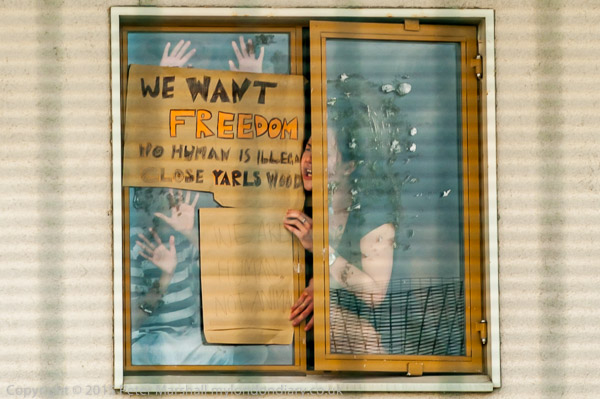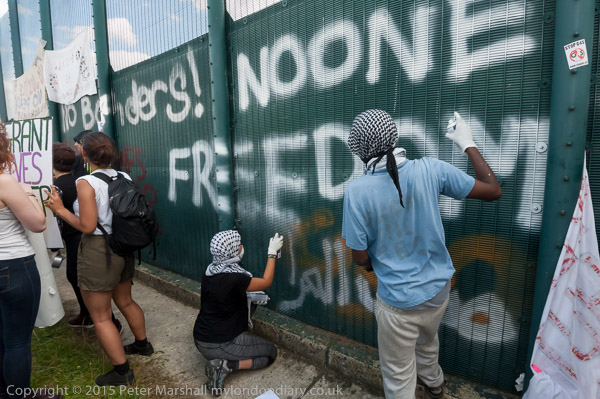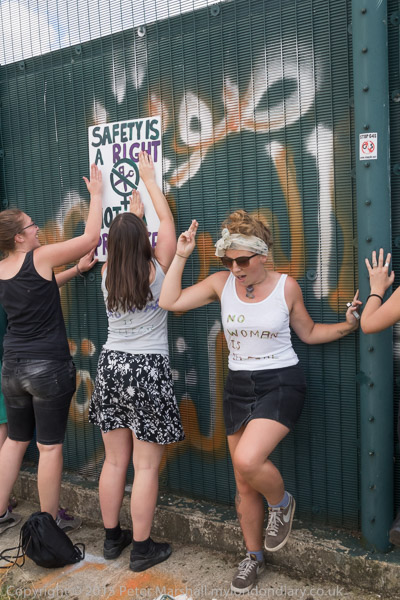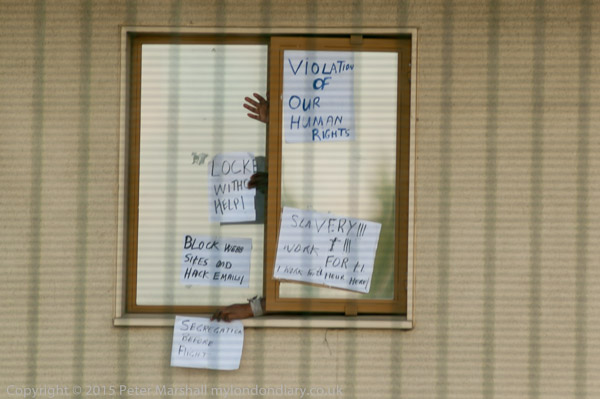Palestine, Boris & Democracy Camp: Ten years ago on Friday 17th October 2014 I covered a protest against bans on family visits to Palestinian prisoners, a spoof newspaper claiming Boris had seen the light over housing shortages and a rally in Parliament Square where Occupy Democracy were intending to camp and hold an unauthorised nine-day event.
Ban on Family visits to Palestinian Prisoners – Victoria
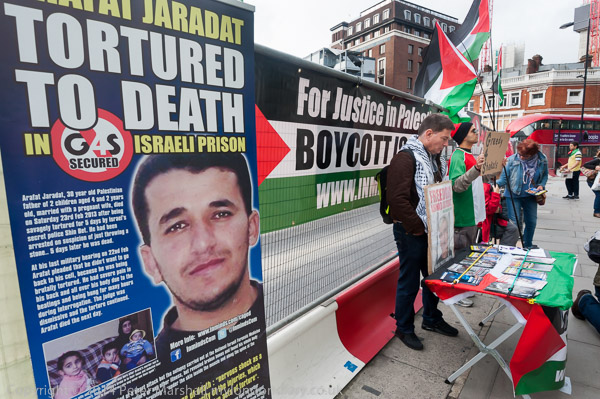
People had come to protest outside the new offices of the G4S Chief Executive Officer in Peak House, a new office building opposite Victoria Station.
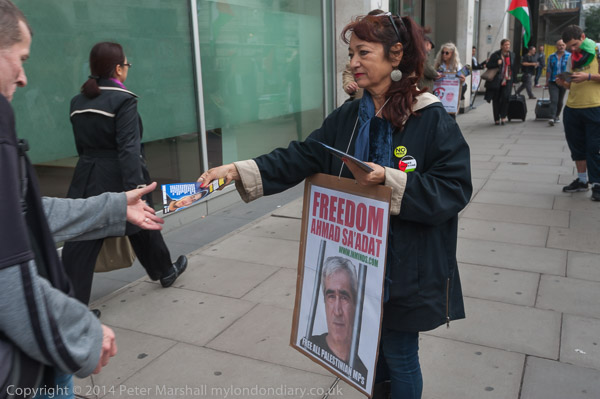
It was a tricky site to hold the protest as most of the area was a building site, with extensive work being carried out to improve Victoria Underground Station (not part of Crossrail as I wrongly thought then, but possible important for the currently suspended Crossrail 2). But the protesters made use of the fences around this part of the building site to attach some of their banners.
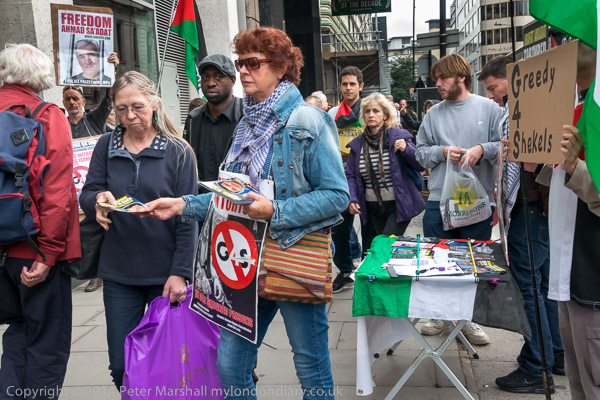
The building works brought many of those walking towards and from Victoria to pass close to the demonstration and more than usual took the leaflets they were offered, with a few stopping to talk and express their sympathy with the protest. There were also two who made adverse comments and I missed seeing when one of them grabbed the lowest of three Palestinian flags of a long pole held by one of the women; she held on to the pole, others rushed to her assistance and the man hurried away.
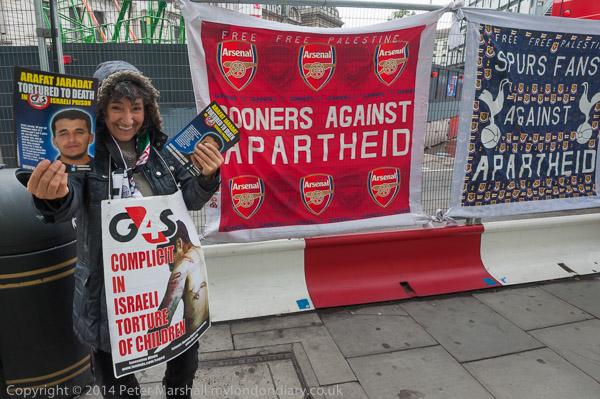
They were protesting against Israel issuing banning orders denying Palestinian families the right to visit their loved ones in prison. A hunger strike in April 2014 by administrative detainees held without trial had ended when Israel had promised to reinstate family visits, but in July Israel reneged on this promise and went back to issuing banning orders again.
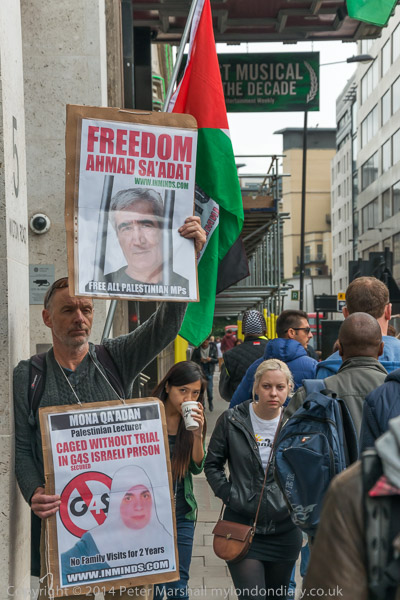
Among individuals the protest highlighted the case of Mona Qa’adan, a woman university lecturer who has been held in jail since November 2012 and has not been allowed a single family visit in two years. She is held in poor health without any trial at the G4S secured women’s prison HaSharon, where prisoners endure beatings, insults, threats, sexually explicit harassment and sexual violence, and humiliation at the hands of Israeli guards. The cells at HaSharon prison are overcrowded, dirty and infected with rodents and cockroaches and there is a total absence of basic hygiene.
Ban on Family visits to Palestinian Prisoners
Spoof shock U-turn by Boris on Housing
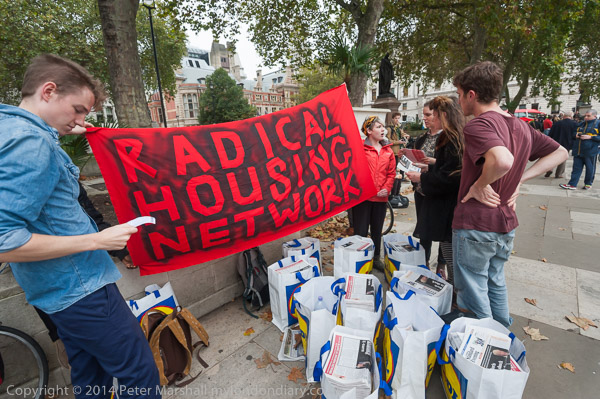
In Parliament Square I met campaingers from the Radical Housing Network with bags containing thousands of copies of a spoof edition of the ‘London Standard Evening‘ newspaper.
Under the headline ‘Boris in shock housing U-turn‘ the paper had Boris Johnson saying “its time to put the social back into housing” and carried features about London housing scandals.
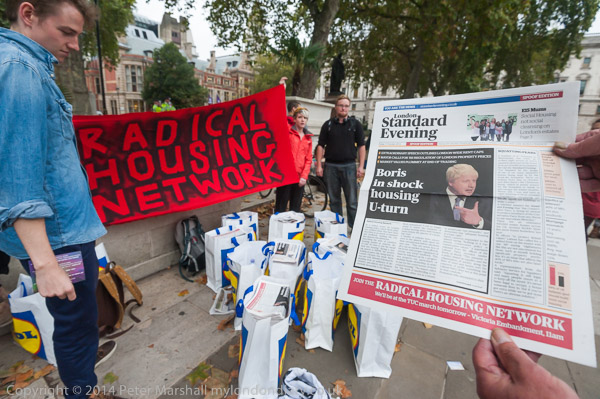
The spoof edition was produced for the final day of the world’s largest property fair, known as MIPIM, which had taken place over three days at Olympia, with protests outside it and a day of workshops on housing issues. London Mayor Johnson had welcomed property developers, investors, financiers and politicians from around the world and encouraged them to build more large tower blocks here to sell to overseas investors.
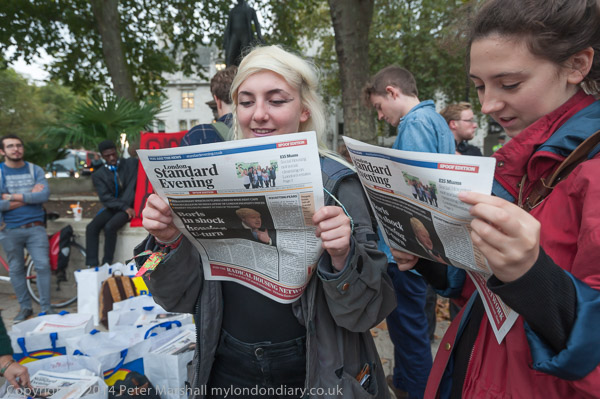
“These developments feed the boom in house prices and rents in London and so exacerbate our increasingly serious housing problem, with a desperate shortage of social housing. Ten of thousands of London families are on council house waiting lists, and communities across the city face eviction and displacement at the hands of the profiteering developers Johnson welcomed to the city with open arms.”
The campaigners left carrying the bags to hand them out outside key tube stations around Central London, but I stayed in the square for Occupy Democracy’s rally.
Spoof shock U-turn by Boris on Housing
Democracy Camp starts with rally – Parliament Square
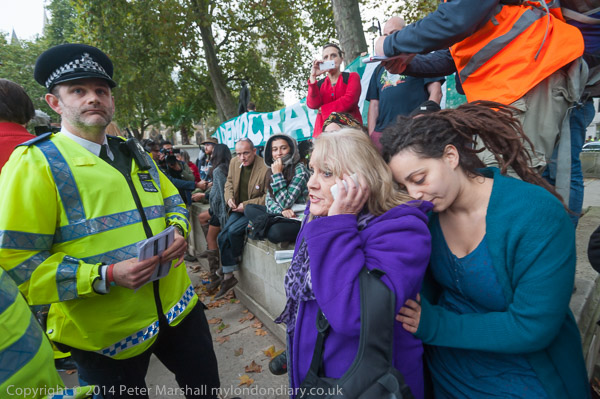
Democracy Camp had widely announced their plans to camp in Parliament Square for nine days and hold a series of protests, rallies and workshops there. Many arrived for the rally with tents and sleeping bags determined to stay.
They intended “to broadcast and demand the solutions we already know exist, to inspire people to be the active citizens required to take back democracy from powerful economic interests.“
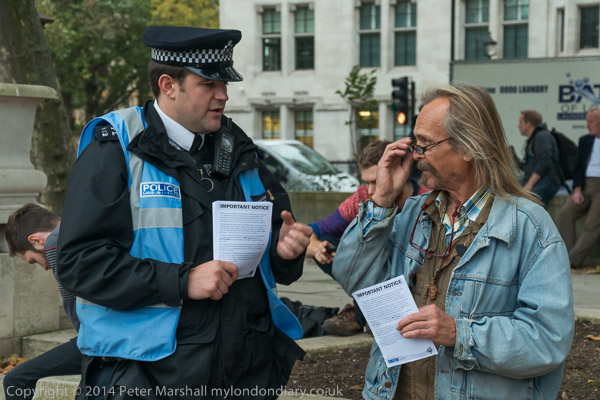
Police and Mayor Johnson were determined they would not set up camp. Police ‘liaison officers‘ handed out an ‘Important Notice’ – basically telling protesters that democracy was stuffed by Act of Parliament as far as Parliament Square was concerned – and Westminster Council bylaws almost make breathing an offence.
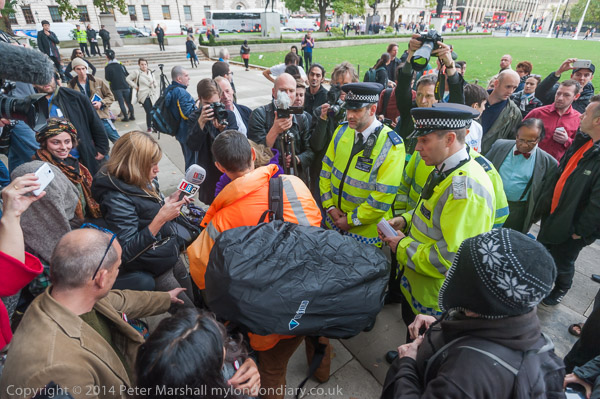
Rather strangely, the Greater London Authority had suddenly decided the the rather healthy looking grass covering most of the square was urgently in need of repair and put up notices closing the area, roping it off, Though those of us who had visited the square knew that they hadn’t done anything about the part of it that really needed attention for weeks. An area that had been damaged by an allowed event some weeks earlier and badly needed roping off and reseeding had still not been touched.
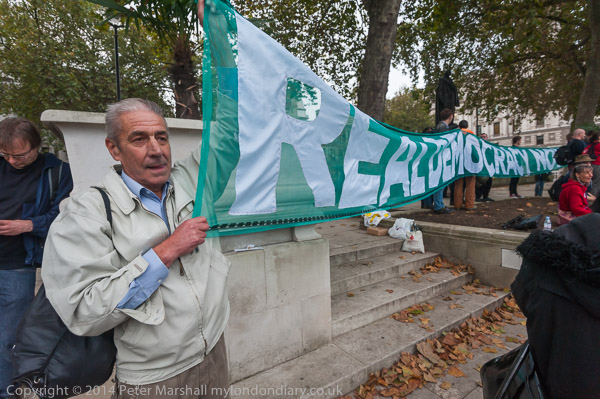
People had come with bags but when asked by police and the private security ‘Heritage Wardens’ stated they intended to sleep elsewhere in London. Police argued with them but I think the media presence stopped them taking the bags away despite the urging by the private security wardens.
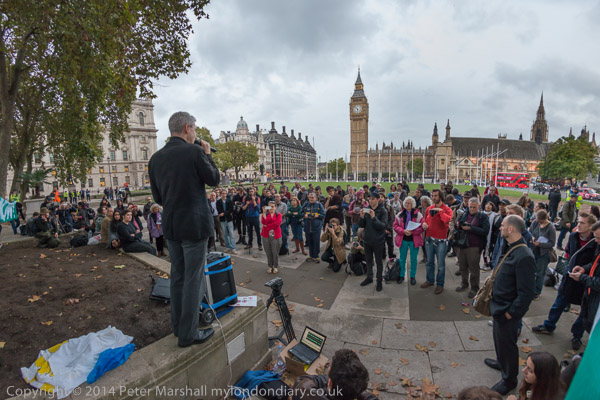
Eventually the start of the evening rally was announced and some speeches began with John Hilary, Executive Director of War on Want and author of The Poverty of Capitalism, followed by others including Mansfield vicar Keith Hebden who had fasted for 40 days for the End Hunger Fast campaign and Robin from the Radical Housing Network talking about MIPIM.

It was getting dark and I was getting tired and hungry. I left to file my pictures and to eat and sleep in a comfortable bed while the rally and the occupation of the square continued.

I came back the following morning and covered events later in the day when the camp did take over the grass and set up camp.
More at Democracy Camp starts with rally.
Flickr – Facebook – My London Diary – Hull Photos – Lea Valley – Paris
London’s Industrial Heritage – London Photos
All photographs on this page are copyright © Peter Marshall.
Contact me to buy prints or licence to reproduce.
